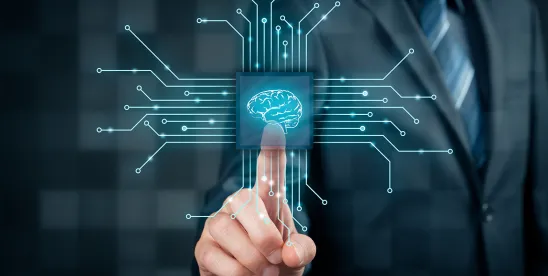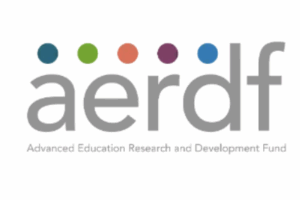Tools & Platforms
AI Patent Innovations Span Cybersecurity to Biotech

It may seem that generative AI tools, such as AI chatbots, image and video generators, and coding agents recently appeared out of nowhere and astonished everyone with their highly advanced capabilities. However, the underlying technologies of these AI applications, such as various data classification and regression algorithms, artificial neural networks, machine learning models, and natural language processing techniques, to name a few, have been in development for over half a century. These technologies have been successfully implemented by companies across various science, technology and industry sectors for analyzing images and data, recognizing patterns, making predictions, optimizing and automating processes, machine translation and speech synthesis. In fact, hundreds of thousands of patents have been filed and granted worldwide by companies for inventions in various technical fields that incorporate innovative uses of AI.
Cybersecurity
US Patent No. 12,333,009 describes a system for detecting anomalies in computer processes using AI, specifically machine learning combined with Markov chains. The system monitors process execution, comparing events against a behavior model to calculate probabilities and identify anomalies. Machine learning models analyze event data to assess anomalous behavior, enhancing detection accuracy and efficiency. This approach allows for real-time identification of vulnerabilities and threats, overcoming limitations of traditional methods by leveraging AI to adapt to evolving cyber threats.
Cloud Computing
US Patent No. 12,033,002 discloses a system for scheduling program operations on cloud-based services using machine learning techniques. It involves breaking down program operations into sub-operations and matching them with suitable cloud service components, considering user constraints like budget and deadlines. The system uses machine learning to identify optimal service component combinations that meet user constraints while considering processing constraints. A scheduler then generates a cost-effective schedule for executing the operations, ensuring efficient use of cloud resources.
Fintech
US Patent No. 11,562,298 describes an AI-based predictive marketing platform that utilizes predictive analytics with first-party data from long-term conversion entities to optimize media content direction. The patented predictive analytics technique enhances conversion frequency and speed by employing machine learning algorithms to analyze online behavior data. The platform integrates online behavior with Customer Relationship Management (CRM) data to forecast conversion likelihood, facilitating more efficient ad targeting and campaign management.
Data Backup
US Patent No. 12,314,219 discloses a machine learning-based system for data archiving. The system collects statistical information and event data to classify data and predict access demands, effectively training itself to archive and extract data as needed. By identifying access patterns, the system adjusts threshold values for file access and assigns access classifications, enabling the migration of files between hot and cold data areas based on these classifications. This approach optimizes data storage and retrieval by leveraging machine learning to manage file access efficiently.
Networking
US Patent No. 11,966,500 describes a system for isolating private information in streamed data using machine learning techniques. Machine learning algorithms are employed to automatically identify and extract private information, such as facial images and license plate numbers, based on usage-specific rules. This extracted data is stored separately from the modified stream, which has the private information removed, ensuring privacy even if unauthorized access occurs. The system’s machine learning capabilities enable efficient and automated data management, adapting to various data types and usage scenarios to safeguard personal information.
Automotive
US Patent No. 10,579,883 describes a method for vehicle detection in intelligent driving systems using AI technology. It employs computer vision algorithms to process images from a monocular camera, identifying lane lines and determining a valid area for vehicle detection based on these lines and the vehicle’s speed. Machine learning, specifically weak classifiers, is used to detect vehicles within this valid area, optimizing processing efficiency by focusing only on relevant image sections. This approach reduces computational load and enhances the speed and accuracy of vehicle detection in driving assistance systems.
Health Care
US Patent No. 11,849,792 discloses a head-mounted device that leverages AI and machine learning to enhance the accuracy of monitoring a wearer’s physical conditions for heat stroke risk assessment. The device integrates sensors for salinity, humidity, body temperature, and heart rate, using AI to process data and predict potential heat stroke scenarios. Machine learning algorithms analyze the collected data to calculate sweating and salt loss, providing real-time insights and alerts. This intelligent system enables proactive management of heat-related risks, ensuring timely interventions to prevent severe health issues.
Telecommunications
US Patent No. 11,616,879 describes a system that uses machine learning to handle unwanted telephone calls, such as those involving fraud or spam. The system intercepts and records calls, converting the audio into digital information using an automatic speech recognizer. Machine learning algorithms analyze this data to classify calls as unwanted or genuine based on their content. The classification model is continuously trained and improved using user feedback, enhancing its ability to accurately identify and manage unwanted calls, thereby improving information security.
Computer Vision
US Patent No. 12,080,054 discloses a method for improving small object detection in images using machine learning, specifically neural networks. Conventional neural networks struggle with detecting small objects, but the proposed method restructures the network by shifting detection layers to earlier stages, where resolution is higher, enhancing the network’s ability to detect small objects without increasing input image size. This approach allows for real-time detection in applications like sports broadcasts, where small objects are identified quickly.
Biotech
US Patent No. 11,259,721 describes a method for noninvasively detecting total hemoglobin concentration in blood using AI technology. It involves determining a differential path factor based on physiological parameters and photoplethysmography (PPG) signals at two different wavelengths. Machine learning, specifically neural networks, is used to establish a relationship between physiological parameters and differential path factors, enhancing the accuracy of hemoglobin concentration measurements. This approach allows for precise, real-time monitoring of hemoglobin levels without the need for invasive blood sampling.
Industry
US Patent No. 12,182,700 discloses a method for improving fault diagnosis in blast furnaces using a deep neural network combined with decision trees. The approach leverages the high precision of deep neural networks to model historical fault data, converting this knowledge into understandable rules for operators. This method addresses the challenges of traditional expert systems and data-driven models by providing a more reliable and interpretable solution. The system enhances the automation and intelligence of iron-making processes, enabling effective human-machine collaboration and improving fault diagnosis accuracy in industrial applications.
Drones
US Patent No. 11,618,562 utilizes AI in the context of unmanned aerial vehicles (UAVs) to subdue targeted individuals. The system employs AI algorithms to analyze real-time data from the UAV’s sensors, enabling it to identify, track, and engage with target individuals autonomously. For example, machine learning is used to detect aggressive individuals based on gesture analysis. By leveraging machine learning and computer vision techniques, the UAV can make informed decisions about the most effective methods to subdue a target, ensuring precision and minimizing the risk of collateral damage.
Robotics
US Patent No. 11,297,755 describes a method for controlling soil-working machines, such as lawn mowers and harvesters, using AI technology, specifically convolutional neural networks (CNNs). These networks process images to create a synthetic descriptor of the soil, enabling machines to operate autonomously by recognizing soil characteristics and obstacles. The AI-driven system eliminates the need for external infrastructure like GPS or beacons, offering robust performance in dynamic environments with varying conditions. This approach enhances the machine’s ability to navigate and perform tasks efficiently, adapting to unexpected changes in the environment.
Resource Management
US Patent No. 12,242,996 discloses a system for managing schedule data by interpreting, detecting, and correcting schedule anomalies based on historical data. It includes components that interpret schedule data, identify violations of schedule norms, and generate corrective actions to adjust the schedule. Machine learning, particularly neural networks, is used to identify trends in historical data, which help establish schedule norms. The system can issue alerts or adjust parameters to ensure compliance with these norms, addressing issues such as excessive overtime or unfavorable shift patterns.
Tools & Platforms
Scale AI is suing a former employee and rival Mercor, alleging they tried to steal its biggest customers

Scale AI, which helps tech companies prepare data to train their AI models, filed a lawsuit against one of its former sales employees and its rival Mercor on Wednesday. The suit claims the employee, who was hired by Mercor, “stole more than 100 confidential documents concerning Scale’s customer strategies and other proprietary information,” according to a copy seen by TechCrunch.
Scale is suing Mercor for misappropriation of trade secrets and is suing the former employee, Eugene Ling, for breach of contract. The suit also claims the employee was trying to pitch Mercor to one of Scale’s largest customers before he officially left his former job. The suit calls this company “Customer A.”
Mercor co-founder Surya Midha denies that his company used any data from Scale, although he admits that Ling may have been in possession of some.
“While Mercor has hired many people who departed Scale, we have no interest in any of Scale’s trade secrets and in fact are intentionally running our business in a different way. Eugene informed us that he had old documents in a personal Google Drive, which we have never accessed and are now investigating,” Midha told TechCrunch in an emailed statement.
“We reached out to Scale six days ago offering to have Eugene destroy the files or reach a different resolution, and we are now awaiting their response,” Midha said.
Scale alleges that these documents contained the specific data that would allow Mercor to serve Customer A, as well as several other of Scale’s most important clients.
Scale wanted Mercor to give it a full list of the files in the drive, and to prevent Ling from working with Customer A. It alleges in the suit that Mercor refused. Ling did not immediately respond to TechCrunch’s request for comment.
Techcrunch event
San Francisco
|
October 27-29, 2025
There are scant clues in the suit about the identity of Customer A. The suit does say that if Scale’s rival did win this customer away, it would be a contract “worth millions of dollars to Mercor.”
Whatever the details of this suit, it does show one thing: Scale is clearly concerned enough about the threat of Mercor to pursue legal action. As TechCrunch previously reported, even with Meta’s multibillion-dollar investment into Scale, TBD Labs — the core unit within Meta tasked with building AI superintelligence — is still using Mercor and other LLM data training service providers.
Mercor is rising in the LLM training arena because it is known for hiring content specialists, often PhDs, to train LLM data in their areas of expertise.
In June, Scale announced that Meta was investing $14.3 billion for a 49% stake in Scale and was hiring away its founder. Shortly after that, several of Scale AI’s largest data customers, who are competitors to Meta’s efforts, reportedly cut ties with it.
Tools & Platforms
CoreWeave Merges AI Cloud with Self-Learning Tech for Smarter Systems

CoreWeave, Inc. (NASDAQ: CRWV) has announced the acquisition of OpenPipe Inc., a leader in reinforcement learning (RL) platforms for training AI agents, marking a strategic move to strengthen its AI cloud capabilities. OpenPipe’s technology is designed to enable developers to train agents using advanced machine learning techniques, allowing the agents to learn from experience and improve over time in accuracy, performance, and reliability. The platform includes Agent Reinforcement Trainer (ART), one of the most widely used open-source RL toolkits for training agents [5].
Brian Venturo, Co-founder and Chief Strategy Officer at CoreWeave, highlighted the importance of reinforcement learning in enhancing model performance for agentic and reasoning tasks. The acquisition integrates OpenPipe’s self-learning tools with CoreWeave’s high-performance AI cloud, creating a more comprehensive platform for developers to build scalable intelligent systems. Kyle Corbitt, Co-founder and CEO of OpenPipe, added that the partnership with CoreWeave enables the expansion of their vision to accelerate the development of reliable, high-performing, and cost-effective AI systems [5].
The acquisition builds upon CoreWeave’s recent acquisition of Weights & Biases, a move that aligns with the company’s strategy to deepen its vertical integration across its technology stack. By incorporating new reinforcement learning and fine-tuning capabilities, CoreWeave is offering customers greater flexibility to train, adapt, and optimize their AI models. This expansion also supports AI labs and enterprises in solving complex problems autonomously, as reported by industry experts in the field [5].
CoreWeave’s AI cloud platform is purpose-built for the scale, performance, and expertise required to power AI innovation. The company operates a growing network of data centers across the U.S. and Europe, and it has been recognized as one of the TIME100 most influential companies and featured on Forbes Cloud 100 in 2024. The acquisition of OpenPipe further positions CoreWeave to meet the growing demand for AI infrastructure, particularly in the realm of autonomous decision-making and learning systems [5].
In addition to this strategic acquisition, CoreWeave recently participated in the Goldman Sachs Communacopia + Technology Conference, where CEO Michael Intrator and Chief Development Officer Brannin McBee provided insights into the company’s vision and roadmap for the future [6]. This engagement with major financial institutions underscores CoreWeave’s ongoing efforts to enhance transparency and communication with its investors and the broader market.
The market has seen mixed reactions to CoreWeave’s recent developments. While the stock initially saw gains following NVIDIA’s strong AI GPU earnings, recent insider selling by top executives and major shareholders like Magnetar Financial triggered a decline in its share price [2]. Despite these short-term fluctuations, CoreWeave remains a key player in the AI infrastructure sector, with strategic partnerships such as the recent expansion with Applied Digital (APLD) further solidifying its position in the market [4].
Source:
[1] CoreWeave, Inc. (CRWV) Is One Of The Biggest Beneficiaries Of NVIDIA’s Booming AI GPU Demand, Says Jim Cramer (https://finance.yahoo.com/news/coreweave-inc-crwv-one-biggest-192935144.html)
[2] CoreWeaves’ Stock Slides as Insider Selling Sparks Investor Concerns (https://www.marketwatch.com/story/coreweaves-stock-slides-as-insider-selling-sparks-investor-concerns-fef032fe)
[3] How Does Reinforcement Learning Power Agentic AI Systems (https://www.getmonetizely.com/articles/how-does-reinforcement-learning-power-agentic-ai-systems)
[4] CoreWeave Just Gave This Data Center Stock a Big Boost (https://finance.yahoo.com/news/coreweave-just-gave-data-center-162455061.html)
[5] CoreWeave to Acquire OpenPipe, Leader in Reinforcement Learning (https://www.businesswire.com/news/home/20250903667712/en/CoreWeave-to-Acquire-OpenPipe-Leader-in-Reinforcement-Learning)
[6] CoreWeave to Participate in the Goldman Sachs Communacopia + Technology Conference (https://investors.coreweave.com/news/news-details/2025/CoreWeave-to-Participate-in-the-Goldman-Sachs-Communacopia–Technology-Conference/default.aspx)
Tools & Platforms
New AI Vaccine Research Program Launched With Ellison Institute Of Technology

The University of Oxford has recently announced an ambitious new project aimed at revolutionizing vaccine development. This initiative is supported by significant research funding of £118 million, which the university has secured through its strategic partnership with the Ellison Institute of Technology (EIT). The goal of this project is to develop innovative solutions to some of the most challenging infectious diseases that continue to threaten public health worldwide.
At the core of this new program is the Oxford Vaccine Group, a highly experienced and respected team within the university’s Department of Paediatrics. The project, named CoI-AI (Correlates of Immunity-Artificial Intelligence), aims to leverage modern technology and scientific expertise to enhance understanding of how the human immune system responds to various pathogens.
This initiative seeks to combine Oxford’s extensive knowledge in human challenge studies, immune science, and vaccine development with EIT’s cutting-edge artificial intelligence (AI) technology. This collaboration promises to pave the way for more effective and targeted approaches to preventing and controlling infectious diseases.
The research will focus on understanding how immune defenses react to some of the most problematic germs that cause severe infections and contribute to the rise of antibiotic resistance. These include bacteria such as Streptococcus pneumoniae, Staphylococcus aureus, and Escherichia coli, which are responsible for widespread illnesses and have become resistant to traditional vaccine strategies.
To achieve this, scientists will use human challenge models, where volunteers are carefully and safely exposed to bacteria within controlled environments. This approach allows researchers to observe immune responses directly and in detail. By integrating modern immunology techniques with advanced AI tools, the team hopes to identify the immune responses that are most predictive of protection, thereby informing the development of more effective vaccines.
In December 2024, Oxford University and EIT announced a strategic alliance aimed at fostering long-term collaboration. This partnership aims not only to develop innovative solutions for pressing health challenges but also to cultivate the next generation of scientific leaders. EIT’s unique approach combines advanced research capabilities with a strong commercial focus, striving to generate sustainable and ethically grounded scientific breakthroughs. The alliance brings together diverse talents and expertise across multiple fields, including generative biology, clinical medicine, plant science, sustainable energy, and public policy.
Supporting these endeavors is a robust computing infrastructure facilitated by Oracle, along with a world-class artificial intelligence team. Additionally, the partnership includes a Scholars program dedicated to nurturing the next wave of the world’s top scientists. Through these combined efforts, Oxford and EIT are working together to address some of the most enduring and complex health challenges of their time, all with the goal of improving global health. outcomes.
KEY QUOTES:
“This programme addresses one of the most urgent problems in infectious disease by helping us to understand immunity more deeply to develop innovative vaccines against deadly diseases that have so far evaded our attempts at prevention. By combining advanced immunology with artificial intelligence, and using human challenge models to study diseases, CoI-AI will provide the tools we need to tackle serious infections and reduce the growing threat of antibiotic resistance. This is a new frontier in vaccine science.”
Professor Andrew Pollard, Director of the Oxford Vaccine Group
“This programme will give us completely new tools to study how vaccines work at both a cellular and system-wide level, by studying infections in real time, in people, and using smart immunology tools and data to find the answers. This will open up whole new avenues to vaccine design as we improve our understanding of infection and immunity.”
Professor Daniela Ferreira, Deputy Director of the Oxford Vaccine Group
“Researchers in the CoI-AI programme will use Artificial Intelligence models developed at EIT to identify and better understand the immune responses that predict protection. This vaccine development programme combines Oxford’s leadership in immunology and human challenge models with cutting-edge AI, laying the groundwork for a new era of vaccine discovery – one that is faster, smarter, and better able to respond to infectious disease outbreaks throughout the world.”
Larry Ellison, Chairman of the Ellison Institute of Technology
“This is a major step forward in our strategic alliance with the Ellison Institute. Together, we’re combining Oxford’s strengths in vaccine science with EIT’s bold vision to tackle some of the toughest problems in global health. This is about drawing more talent and capacity to the Oxford ecosystem to turn scientific challenges into real solutions for the world.”
Professor Irene Tracey, Vice-Chancellor of the University of Oxford
-

 Business5 days ago
Business5 days agoThe Guardian view on Trump and the Fed: independence is no substitute for accountability | Editorial
-
Tools & Platforms3 weeks ago
Building Trust in Military AI Starts with Opening the Black Box – War on the Rocks
-

 Ethics & Policy1 month ago
Ethics & Policy1 month agoSDAIA Supports Saudi Arabia’s Leadership in Shaping Global AI Ethics, Policy, and Research – وكالة الأنباء السعودية
-

 Events & Conferences4 months ago
Events & Conferences4 months agoJourney to 1000 models: Scaling Instagram’s recommendation system
-

 Jobs & Careers2 months ago
Jobs & Careers2 months agoMumbai-based Perplexity Alternative Has 60k+ Users Without Funding
-

 Education2 months ago
Education2 months agoVEX Robotics launches AI-powered classroom robotics system
-

 Funding & Business2 months ago
Funding & Business2 months agoKayak and Expedia race to build AI travel agents that turn social posts into itineraries
-

 Podcasts & Talks2 months ago
Podcasts & Talks2 months agoHappy 4th of July! 🎆 Made with Veo 3 in Gemini
-

 Podcasts & Talks2 months ago
Podcasts & Talks2 months agoOpenAI 🤝 @teamganassi
-

 Education2 months ago
Education2 months agoAERDF highlights the latest PreK-12 discoveries and inventions

